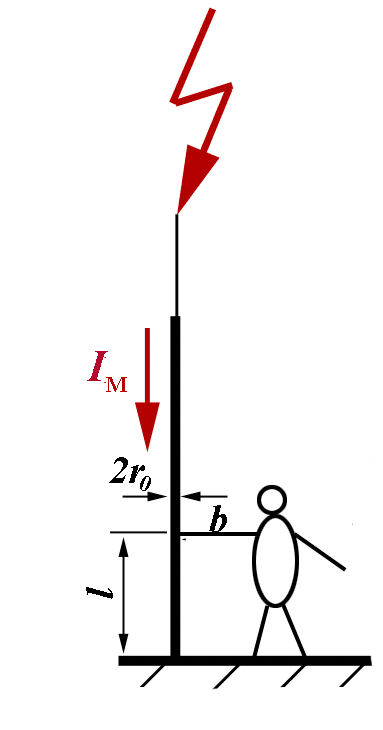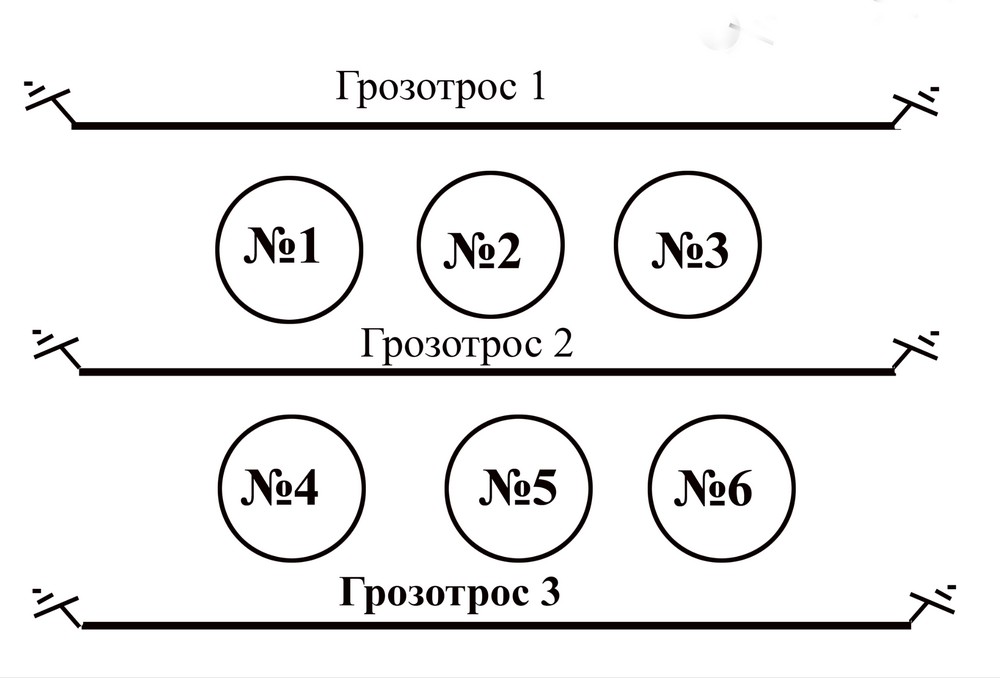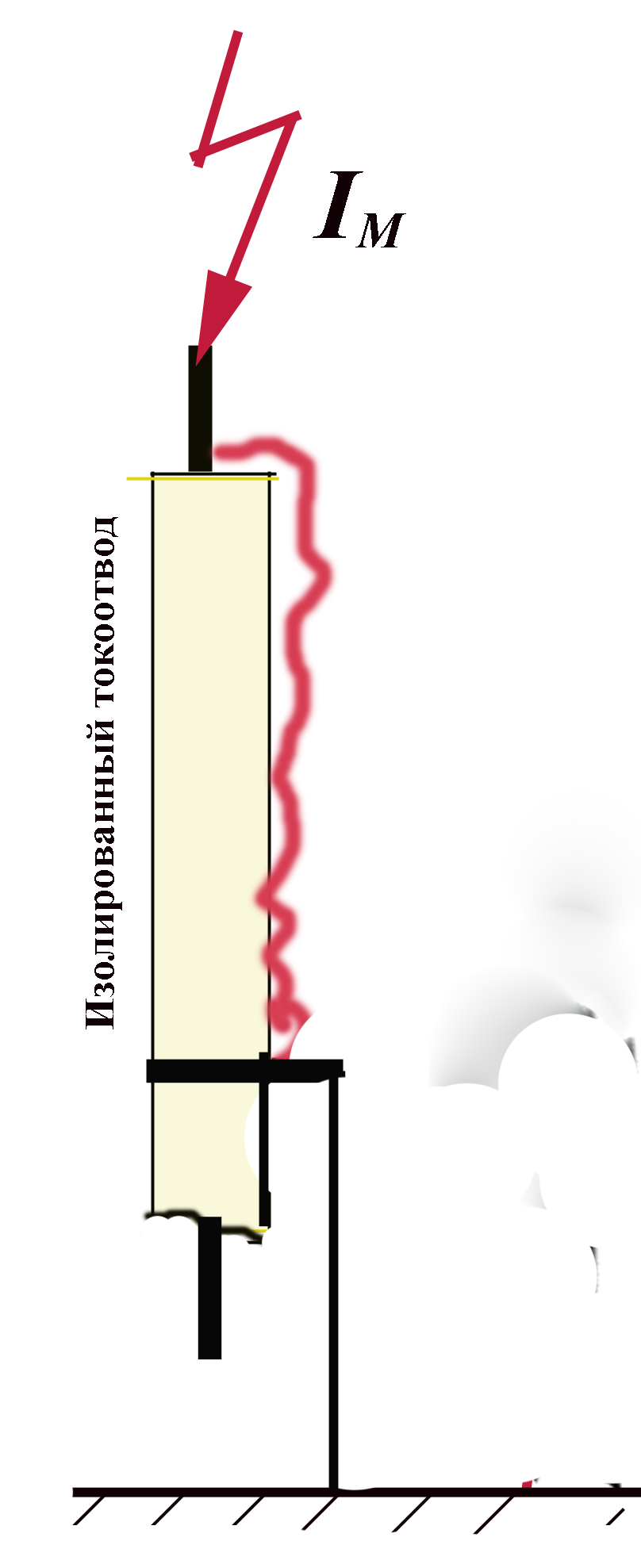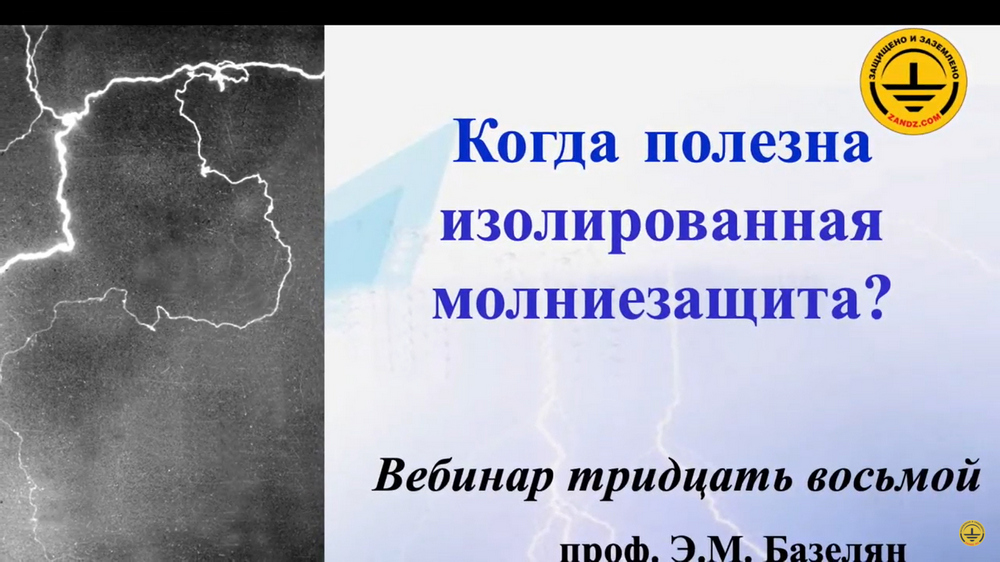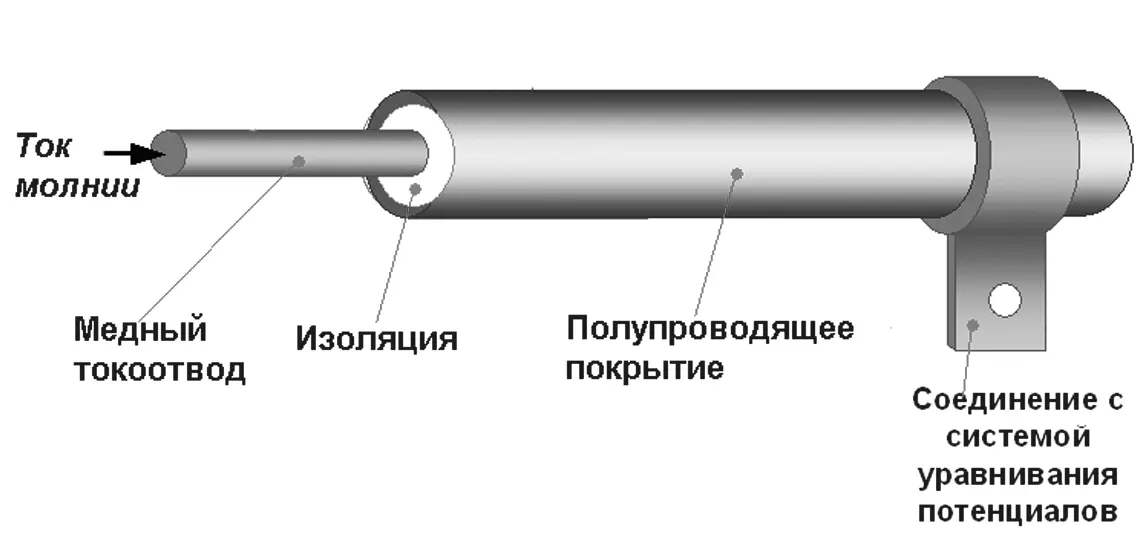
Ток молнии - Lightning current
Медный токоотвод - Copper current collector
Изоляция - Insulation
Полупроводящее покрытие - Semi-conductive coating
Соединение с системой уравнивания потенциалов - Bonding system connection
When designing an isolated lightning protection system, it is important to remember not only the danger of a direct lightning strike but also the great harm of its secondary effects. Modern buildings are stuffed with sensitive low-current systems that can easily be damaged by a successfully captured discharge. Does insulated lightning protection solve an issue of dangerous interference in the power grid?
By capturing the lightning channel, the lightning arrester does not almost weaken the electromagnetic field produced by its current. This is also true for an insulated system. Passing through the lightning collector and current conductor, the lightning current forms its own electromagnetic field, which excites electromagnetic interference in the object's connections. Note that insulated current collectors cannot be used as a means to significantly limit the interference. The magnetic field decreases, but no faster than inversely proportional to the distance to the current collector. Neither the insulating coating nor the semiconducting layer on the outer surface of the current collector has any significant shielding effect. Moreover, when using a current collector with a semi-conductive coating, the installers attempt to install it at the shortest possible path. In some cases, it happens to be placed rather close to the external electronic modules of the facility. As a result, the electromagnetic interference may even increase, and you may need to install SDPs at the module inputs to protect them.
Read more on specifics of insulated lightning protection in an interesting article by Prof. Eduard Bazelyan.
Related Articles:
